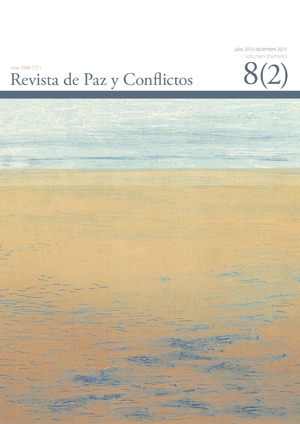Cultures, Global Worlds and Peace
DOI:
https://doi.org/10.30827/revpaz.v8i2.3178Keywords:
Intercultural, Religions, Identities, Conflicts, Peace ResearchAbstract
This article is focused on the works that derive from the field of study about peace and, more specifically, the theory relating to imperfect peace, developed by a group of researchers some years ago. Francisco A. Muñoz, researcher from Granada (Andalusia, Spain) was the originator of this theory at the beginning of the 2000 and afterwards, it was applied by other academics to different fields related to the study of peace.
The central theme of our work is to analyse the cultural field and the mediating role of cultures in the peaceful regulation of conflicts, considering that all human activity has cultural connotations. We will talk about cultures, not as isolated entities that are geographically delimited, but as interrelating spaces that give rise to social structures in which changes and transformations, ideas and ways of acting (ranging from the personal to the social, the political and the international) occur that may be common, shared and compatible.
These cultural aspects will be studied from the method or perspective called Peace Research, discipline which allow us analysing, among others, the social and culture phenomena that form part of historical processes in different places and times. The main topic will be focussed on the religious aspect, as one of the cultural identifying and its influence on identities, although other cultural dimensions could be studied (economical, political, environmental or educational).
Additionally, we are setting our analysis on the world stage, where cultures and all human activity unfold today. Current globalization is a process that affects most of our reality: economic models, the market, nationalisms, international relations, relationships between cultures and religions, gender relations, education, etc. In all these spheres, problems and conflicts are generated that cannot be understood if we do not consider them to be ‘global problems’. Once the results of our study are reached, we can conclude that it is possible to think about cultures from their pacific contribution, more than its violent aspect.
Downloads
Downloads
Published
How to Cite
Issue
Section
License
Esta obra está bajo una licencia internacional Creative Commons Atribución 4.0.














